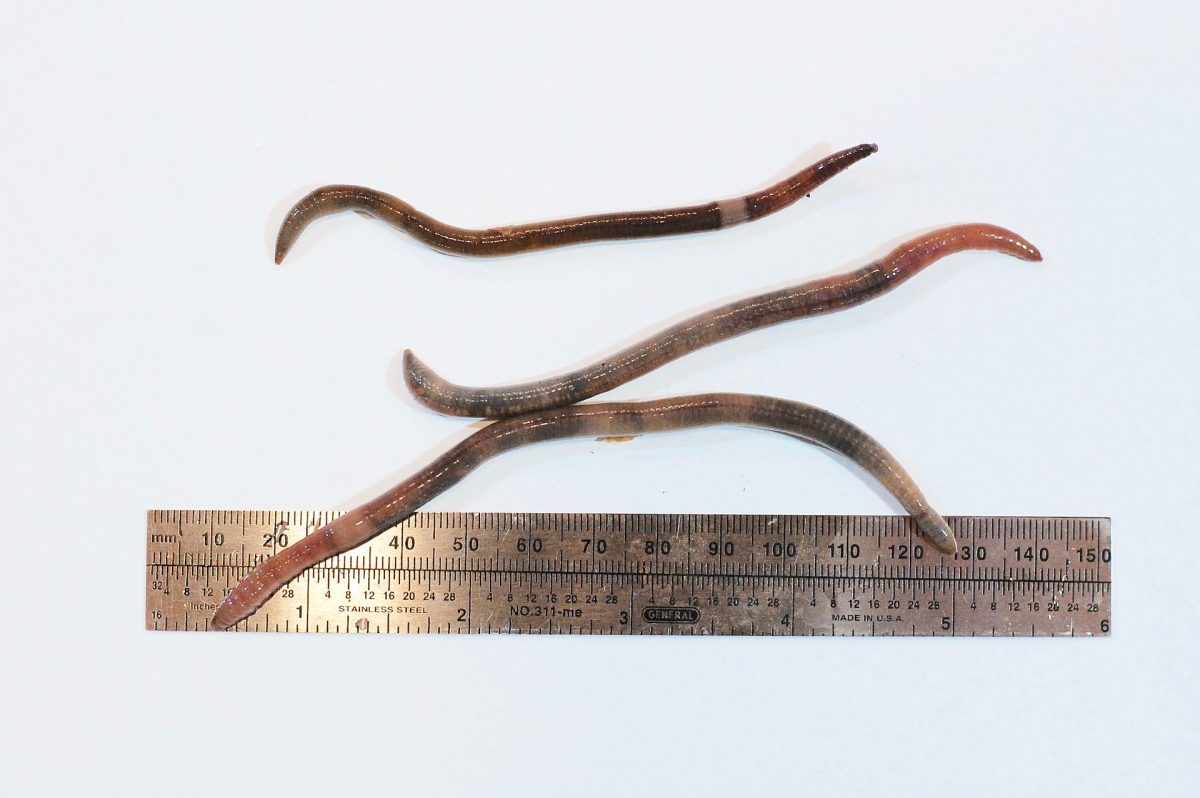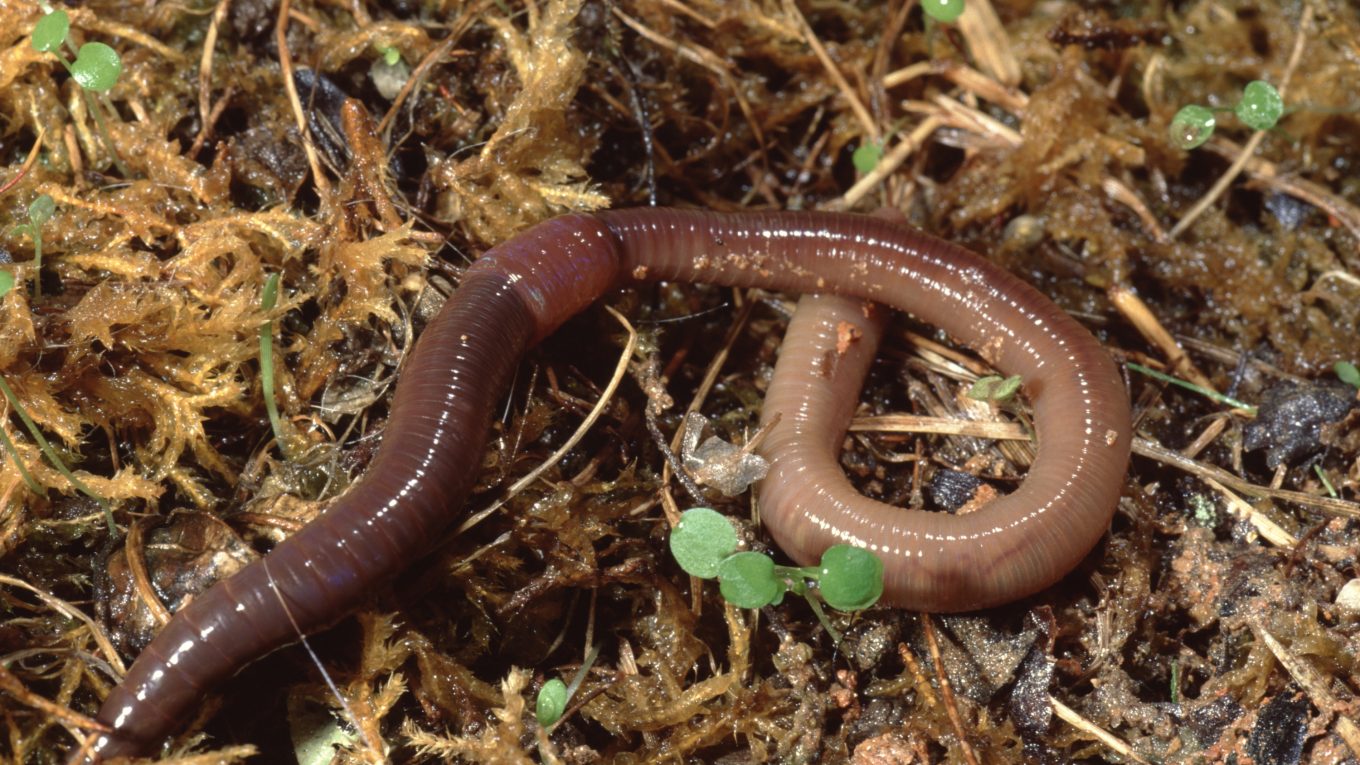Earthworms – native and non-native, nightcrawlers and jumping worms
I have been finding loads of earthworms this week as I plant bulbs which is really encouraging as it’s a really good sign that my soil is healthy.
Earthworms are vital for healthy soil. They pull organic matter into the soil where it is broken down and the nutrients made available to plants. Some earthworms build burrows that help drainage and aeration, but they also help soils to become more effective at holding water so reduce the risk of water run-off and flooding.
And there are lots of different species of earthworms – 31 in the British Isles – some are very small and others large and each has a role to play in the soil ecosystem.
In the UK, earthworms are under threat from introductions, such as the Australian and New Zealand flatworms which prey on invertebrates, especially earthworms. Since they were first detected, these flatworms have spread widely and can decimate earthworm populations, which has a major effect on the soil ecosystem and food chains dependent on earthworms.
However, in North America, the tables are turned as it’s introduced European earthworms that are causing the problem. The common nightcrawler (Lumbricus terrrestris) and the European nightcrawler (Dendrobaena hortensis) arrived with the European settlers and were introduced to gardens when gardeners and growers discovered that their soil didn’t have any earthworms. There is no doubt that in US gardens nightcrawlers are beneficial as they boost the decomposition of organic matter, aerate the soil and providing food for wildlife, but it’s a very different story for a forest ecosystem.
We have to remember that in soil ecosystems, earthworms are considered as system engineers – they can create soil, aerate it, alter its structure and even destroy it.
The northern American forests of Canada, Midwest and New England became established after the last glaciation more than 10,000 years ago. But interestingly, the soil lacks earthworms and as a result, the forest ecosystem is not adapted to the presence of earthworms, unlike forests to the south. There is a deep litter layer which lies over the forest floor undisturbed. This promotes fungal growth, provides protection for seeds to germinate, and reduces the risk of soil erosion.
So how are the nightcrawlers causing problems in forests. Well, they like leaf litter! Their burrowing and leaf eating habits disturbs the leaf litter and breaks it down and, sadly, for many of the native understorey species. It’s creating conditions that they don’t like, as they rely on the moisture and nutrients of the leaf litter, while the activity of the worms exposes more seeds to birds etc. In some places, non native European forest species are getting the upper hand, for example garlic mustard. The result tends to be less biodiversity. However, all of this is happening very slowly as we have to remember that these non native earthworms have been in North America for 400 years.

And now North America is faced with yet another non native earthworms, the weirdly named jumping worm or crazy worm (Amynthas agrestis), so called because it can wriggle and jump up to 30 cm into air when handled! These natives of Japan and Korea are easily to identify by their white saddle. They were first spotted in California but now have been seen in 12 states. Just like the European earthworm, its their love of fallen leaves that is threatening the forests. But the threat is greater as jumping worms have voracious appetites – some claim that a population of jumping worms can devour the protective layer of leaf litter in a forest in just a few years. They leave the soil bereft of nutrients, and with more granular structure that makes it prone to erosion. The resulting conditions make it difficult for native fungi and understorey plants. These invaders are spreading fast too because they are parthenogenic – in other words the female can produce clones of herself without a male, so they can reproduce quickly, just like that other parthenogenic species – the aphid.
The jumping worm is an annual species, unlike the European invader, as the adults don’t survive cold winters, but their egg cocoons do. Control is difficult, other than removing adult worms and cocoons and checking soil in purchased plants, there is not much that can be done. and its not going to get any easier as climate change means that winters are getting warmer.
We often refer to earthworms as a gardener’s or farmer’s best friend but its useful to remember that in other parts of the world they are not quite as desirable!
Find out more
You can find out more about earthworms by visiting the Earthworm Society of Britain and you can even do an online course to learn more about these essential animals. www.earthwormsoc.org.uk
If you want to learn more about these unusual earthworms, listen to Joe Lamp’l talk to ecologist Brad Herrick who is had been studying the effects of jumping worms on garden and forest ecology.https://joegardener.com/podcast/invasive-jumping-worms/




